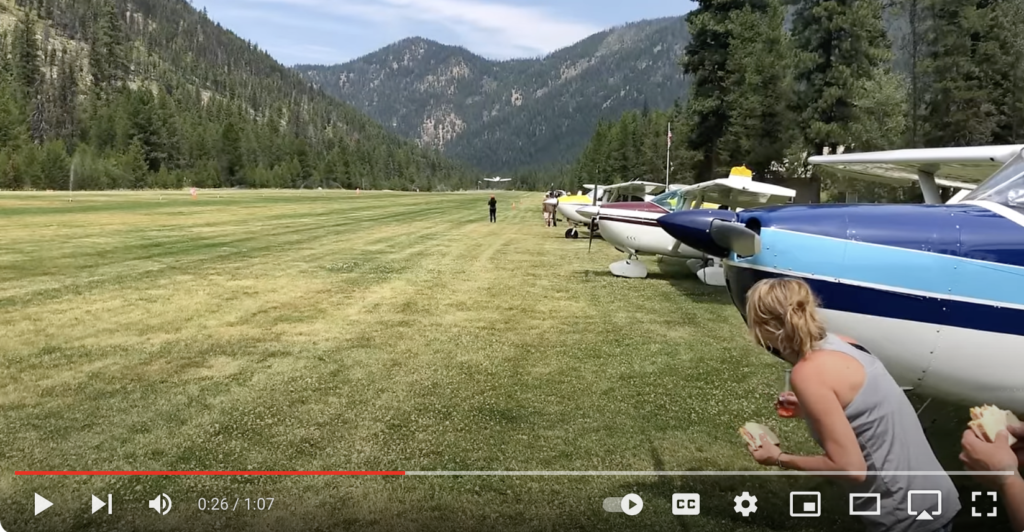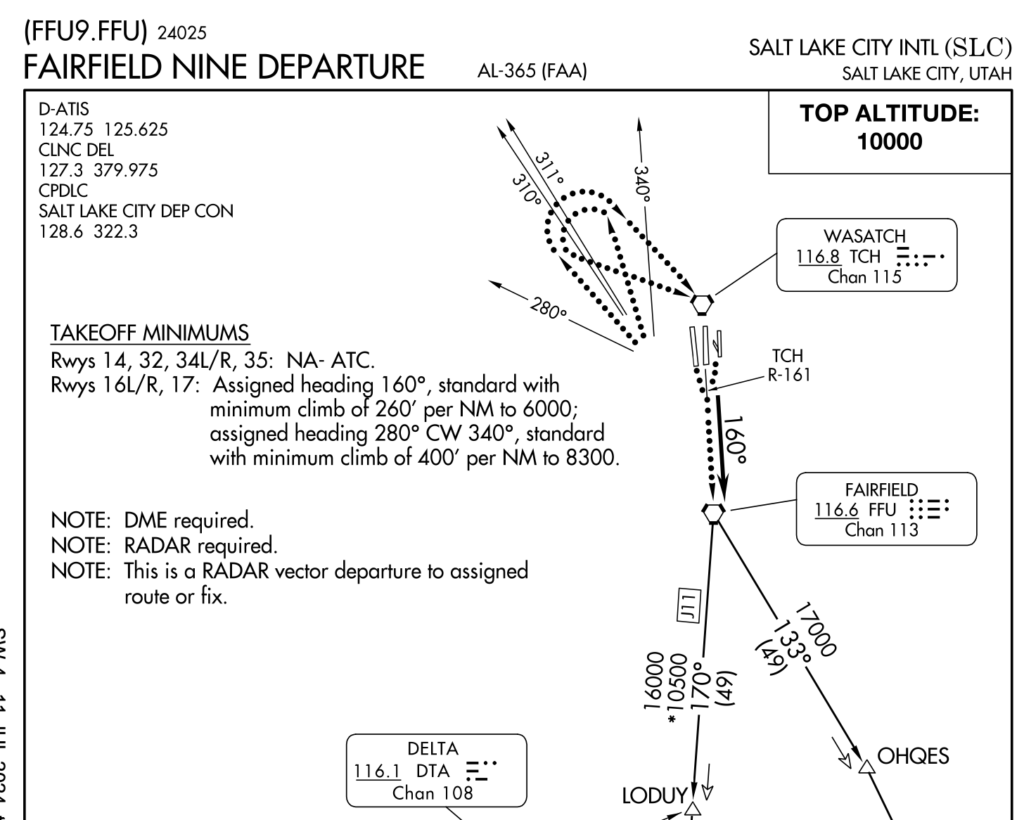
You’ve likely seen the viral video this week of a Cessna 152 attempting to climb toward a mountain ridge, only to appear to stall, fall off on a wing and dive, barely clearing terrain as it reversed course and pullied out—according to several comments and by simply looking at the Cessna’s shadow in the video—within perhaps three feet of the ground. Astute observers note the Cessna’s elevator appeared to be fully up through the entire maneuver, making the recovery even more miraculous.

A lot of instruction, pilot talk and editorial space is devoted to techniques for high density altitude operations. The conversation is almost exclusively limited, however, to the challenge of obtaining maximum performance for takeoff and obstacle clearance. Once past the trees or power lines, in almost all discussion of hot-and-high flight stops as soon as the airplane leaves the immediate airport environment.

True, the detrimental effects of high density altitude are most obvious, and most immediately critical, close to the ground. If you don’t manage the engine and mixture properly, and you don’t precisely fly the optimum takeoff technique, configuration, angle of attack and indicated airspeed, you risk not getting far enough from the runway to broach the topic of maximum performance for an extended climb.
The Cessna 152 pilot had clearly been successful at making a takeoff on that hot summer day. But he didn’t quite have the performance to clear the ridge. How do you optimize performance in an extended climb? And how can you be sure the performance you’re getting is sufficient to clear a mountain or ridge?
Optimus Climb
Once clear of the tree line, if rising terrain along your flight path—or a need to climb through a gap in the clouds, or past busy airspace, or for some other reason—requires expeditious climbing, there are precise techniques for getting the most out of the airplane.
- Throttle. Fly at full throttle unless the Pilot’s Operating Handbook (POH) or Airplane Flying Manual (AFM) specifically prohibits it. The manual might have a recommended climb power setting at something other than full throttle. But unless it’s an engine or airframe limitation give it everything it’s got for a maximum performance climb.
- Propeller. If the airplane has a controllable pitch propeller, and again unless there is a POH/AFM or AD limitation against it, use maximum propeller speed for optimum climb. You want maximum RPM with a fixed-pitch propeller too, which is one way of attaining the fourth optimal technique.
- Rudder. It’s easy to underestimate the importance of rudder coordination in a climb. But coordination really is vital to eking maximum performance, especially as density altitude increases. Uncoordinated flight increases drag significantly and drag robs performance. Climbing in a slip or skid can reduce climb by hundreds of feet per minute. But use rudder correctly so the airplane climbs directly into the relative wind streamlines the aircraft, and that increases its ability to climb.
- Mixture. Achieving the optimal fuel-to-air ratio is so important to maintaining maximum climb that I’ll address it in a separate section below.
- Airspeed. As attaining maximum climb performance becomes more important, maintain VY speed for maximum climb rate. Although VY is published at a single value in the POH/AFM, the speed that reflects best-rate angle of attack reduces with a reduction in airplane weight. If there is terrain directly ahead, then, fly at VX for best angle of attack, but this speed too decreases with a reduction in weight.
We’ve discussed in recent FLYING LESSONS how V-speeds change with an increase in altitude…VX speed increasing as you climb, while VY decreases. For example, the Cessna 152 POH tells us:
Best rate of climb, sea level ………………..67 KIAS
Best rate of climb, 10,000 feet ……………..61 KIAS
The pitch attitude for a given indicated airspeed is shallower as density altitude increases and power is reduced.
Best power
For maximum climb you need maximum power. With the throttle and propeller giving their all, the greatest variable for power development is mixture. We (hopefully) learn to lean for maximum takeoff power, but the importance of continuing to lean as the air thins in a climb isn’t given much emphasis. Fail to lean in a climb, however, and the progressive richer mixture in climb—that is, more and more fuel per unit of thinning air—results in less-than-optimal power. The trick, then, is to progressively lean the mixture in climb so that you are always close to the very Best Power setting.
There are several ways to do this, depending on the engine and the airplane’s instrumentation. For example, a simple airplane like our Cessna 152 example has a fixed-pitch propeller and, generally, little or no engine instrumentation useful for fine-tuning the mixture. The C152 POH tells us how to find maximum available power for a short-field takeoff:
Mixture….RICH. Above 3000 feet, LEAN to obtain maximum RPM.
The POH repeats this same guidance on the Climb checklist.
Maximum propeller speed is the criteria for maximum power. Once established at climb speed with the throttle fully forward, lean slowly until RPM reaches its maximum and begins to drop. Enrichen the mixture slightly so the RPM returns to its maximum. Note the precise value; when RPM begins to drop, lean the mixture very slightly until it returns to that maximum value. Keep doing this every 500 to 1000 feet all the way to the top of your climb.
Many airplanes have an Exhaust Gas Temperature (EGT) gauge. The Cessna 182Q POH, as an example, includes this step on its MAXIMUM CLIMB PERFORMANCE checklist:
Mixture…..FULL RICH (mixture may be leaned above 5000 feet)
The C182Q POH includes in its Amplified Procedures a section on using what it calls the Cessna Economy Mixture Indicator—an EGT. It suggests finding leaning to find peak EGT and then enriching to find a temperature 50°F rich of that peak point. Not mentioned in the book, once you find this point on the EGT gauge, every 1000 feet or so in climb lean the mixture as needed to keep the EGT at that same reference line.
Data from both Lycoming and Continental engine manuals differ from the Cessna guide, showing that maximum horsepower—Best Power—occurs at 75-100° Fahrenheit rich of peak EGT.
Some airplanes have fuel flow gauges that provide another means of finding Best Power mixture for a given altitude. For climb power the Beech V35B Bonanza POH states:
Mixture….Set Fuel Flow
To facilitate this, that vintage of Bonanza’s fuel flow gauge is marked with altitude brackets. At climb power, simply lean the mixture until the fuel flow needle points at the airplane’s current altitude. As you climb, occasionally lean the mixture further to keep the needle aligned with your altitude.

V35B Bonanza fuel flow gauge with altitude brackets from SL (sea level) through 3000, 5000
and 7000 feet
Other types may not have an altitude-marked fuel flow gauge, but instead have a fuel flow vs. altitude table in the POH and/or on a placard on the instrument panel.
Probably the most precise method, and frankly one of the easiest to maintain precisely, is sometimes called the Target EGT technique. This is possible with an engine monitor that displays EGT digitally. Establish Best Power at 75-100°F rich of peak EGT. Note the indicated EGT (or the hottest EGT among them). As you climb, lean to maintain approximately this same EGT.
The Target EGT method works regardless of field elevation for takeoff, and at any altitude as you climb. Set throttle and propeller, lean until reaching the target, and keep it there until level-off.
In a turbocharged or turbonormalized airplane the general rule is to climb at full rich mixture until passing critical altitude. The greatly reduced loss of thrust in climb that turbo systems provide may still suffer because the mixture is often set very rich in these engines—far richer than Best Power, in a regime where power is lost because of delayed combustion (sometimes defined only partly incorrectly as “flooding the engine”). If climb becomes critical you may have to lean to Target EGT until above the terrain, watching cylinder temperatures carefully as you do so.
It will take some experimentation and practice to learn how to optimize your climb. Enter an extended climb in an area without obstacles and learn how to find the right attitude for the right airspeed—adjusting pitch up or down a degree or two at a time to see the vertical speed result—while keeping the slip/skid ball or bar centered and the mixture fine-tuned for your current altitude.
Over the top
You’re skillfully managing throttle, propeller speed, rudder coordination, mixture control and airspeed. You’re getting every bit of climb performance the airplane is capable of delivering under the current conditions. How can you be sure the performance you’re getting is sufficient to clear the rising terrain?
You can’t. Unless you are already above the terrain there’s no way to tell for certain your climb will be sufficient. This is especially true in the mountains, where changing wind patterns frequently create invisible turbulence and downdrafts that inhibit an airplane’s climb.
Mountain pilots in the know instead climb over lower terrain, circling up sometimes even right over the airport. They climb in this area of safety until they are at or above a safe height above the highest terrain they’ll overfly. Only when already high enough to clear terrain do they turn on course and fly toward the mountain or ridge.
This strategy, in fact, is codified in FAA procedures. A Visual Climb Over Airport (VCOA) describes this maneuver as a way to safely depart IFR when in visual conditions in mountainous terrain. Obstacle Departure Procedures (ODPs) may specify something similar. Even the airline crowd sometimes climbs visually over lower terrain before turning on course.

Air carrier instrument departure, Salt Lake City International Airport
The pilot of the Cessna 152 miraculously survived a near collision with terrain. Most pilots who put themselves in a similar position are not so lucky. Not everyone gets the message about high density altitude takeoffs, but we do talk, read and write a lot about it. Very rarely to we adapt this LESSON to the need to maximize climb performance as altitude increases in climb. Now you know.
Questions? Comments? Supportable opinions? Let us know at [email protected].

Debrief: Readers write about recent FLYING LESSONS:
Reader and student pilot Anita P. Kazarian writes about last week’s report:
Thank you for sharing your notes on Stick and Rudder. I purchased it after hearing several references to it at Oshkosh last year, and on FAASafey webinars. I read it through once (and highlighted and underlined as you did). Your article inspired me to pick it up for a second reading. On the first reading I had a few question marks. I still do.
In landing an airplane, to make it sink down on the runway and stay down, you move the controls much as for an extreme upward zoom. Assuming he is on final, nose down until round out, then point the nose up for flare. But what he writes is not clear to me
In the glide, if you want to descend more steeply you point your nose down less steeply. What is “glide” in this sentence? I cannot understand this guidance.
If you want to descend less steeply, you point the airplanes’ nose down more steeply! Again, I don’t understand.
Also, flippers are the elevators, right?
To your first question, that’s basically what Langewiesche means. He’s describing the counterintuitive fact that to flare and land you use the controls to raise the nose as if you are trying to climb. As you wrote, he is describing roundout and flare.
“Glide” in the vernacular of Langewiesche’s time, or more correctly, in the 1920s and ‘30s as written by a seasoned veteran in the 1940s using the terms from his youth, is descriptive of descending on final approach. In early aviation landing began by retarding the throttle to idle (or in the very early years, altering ignition timing to reduce power), followed by a continuous glide to a landing. Like the Power Off 180 Practical Test maneuver today. Hence “glide” is synonymous with descent from pattern height to a landing.
The angle of descent for a given airplane configuration (that is, gear and flap position as applicable) is a function of power and airspeed. As Langewiesche notes repeatedly in his book, airspeed is the byproduct of angle of attack, and angle of attack is controlled by the elevator control. If you want to increase rate of descent, increase the angle of attack, that is, raise the nose relative to the direction of flight. Drag increases so rate of descent increases. If instead you want to reduce your rate of descent you want to reduce drag by reducing angle of attack. Lower the nose and your rate of descent decreases; you make more forward speed and distance, but you don’t go down as fast. All this assumes power remains constant. But, as discussed above, in Langewiesche’s day descents were made in a power-off glide, so his description of angle of attack-driven vertical speed is valid.
And yes, in the term of his time Langewiesche uses “flippers” to describe the aircraft’s elevator.
Please let me know if I made things more confusing instead of more clear. Best of luck as you pursue your Private certificate, Anita!
More to say? Let us learn from you, at [email protected]

Share safer skies. Forward FLYING LESSONS to a friend.
Please help cover the ongoing costs of providing FLYING LESSONS through this secure PayPal donations link. Or send a check made out to Mastery Flight Training, Inc. at 247 Tiffany Street, Rose Hill, Kansas USA 67133. Thank you, generous supporters.
Thank you to our regular monthly financial contributors:
Steven Bernstein, Montclair, NJ. Robert Carhart, Jr., Odentown, MD. Randy Carmichael, Kissimmee, FL. Greg Cohen, Gaithersburg, MD. John Collins, Martinsburg, WV. Paul Damiano, Port Orange, FL. Dan Drew. Rob Finfrock, Rio Rancho, NM. Norman Gallagher. Bill Griffith, Indianapolis, IN. Steven Hefner, Corinth, MS; Ellen Herr, Ft Myers, FL. Erik Hoel, Redlands, CA. Ron Horton. Robert Hoffman, Sanders, KY. David Karalunas, Anchorage, AK. Steve Kelly, Appleton, WI. Karl Kleiderer. Greg Long, Johnston, IA. Rick Lugash, Los Angeles, CA. Richard McCraw, Hinesburg, VT. David Ovad, Resiertown, MD. Steven Oxholm, Portsmouth, NH. Brian Schiff, Keller, TX. Paul Sergeant, Allen, TX. Ed Stack, Prospect Heights, IL; Paul Uhlig, Wichita, KS. Richard Whitney, Warrenton, VA. Jim Preston, Alexandria, VA. Johannes Ascherl, Munich, Germany. Bruce Dickerson, Asheville, NC. Edmund Braly, Norman, OK. Steven Hefner. Lorne Sheren, New Vernon, NJ
And thanks to these donors in 2024:
Jim Lara, Joseph Stadelmann, Dixon Smith, Barry Warner, Wayne Mudge, Joseph Vandenbosch, Ian Campbell, Jay Apt, John Kimmons, Derek Rowan, Michael Maya Charles, Ron Horton, Lauren McGavran, Gerald Magnoni, Amy Haig, Rod Partlo, Brent Chidsey, Mard Sasaki-Scanlon, SABRIS Aviation (Dave Dewhirst), Edmund Braly, Joseph Orlando, Charles Lloyd, Michael Morrow, Abigail Dang, Thomas Jaszewski Danny Kao, Gary Garavaglia, Brian Larky, Glenn Yeldezian, David Yost, Charles Waldrop, Robert Lough. Gilbert Buettner. Panatech (Henry Fiorientini). Dale Bleakney. Mark Kolesar. John Winter. Donald Bowles
Pursue Mastery of Flight
Thomas P. Turner, M.S. Aviation Safety
Flight Instructor Hall of Fame Inductee
2021 Jack Eggspuehler Service Award winner
2010 National FAA Safety Team Representative of the Year
2008 FAA Central Region CFI of the Year
FLYING LESSONS is ©2024 Mastery Flight Training, Inc. For more information see www.thomaspturner.com. For reprint permission or other questions contact [email protected].

